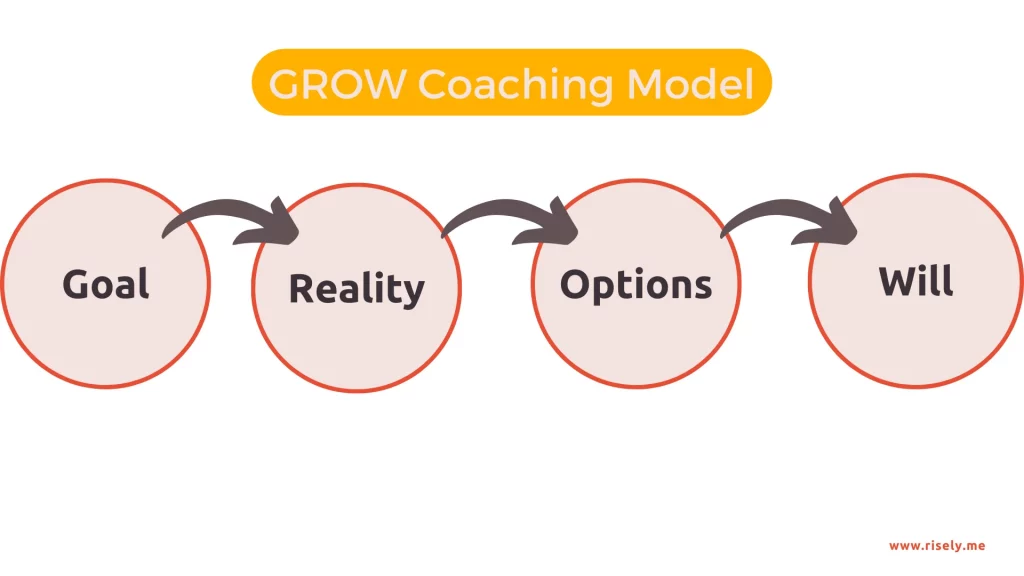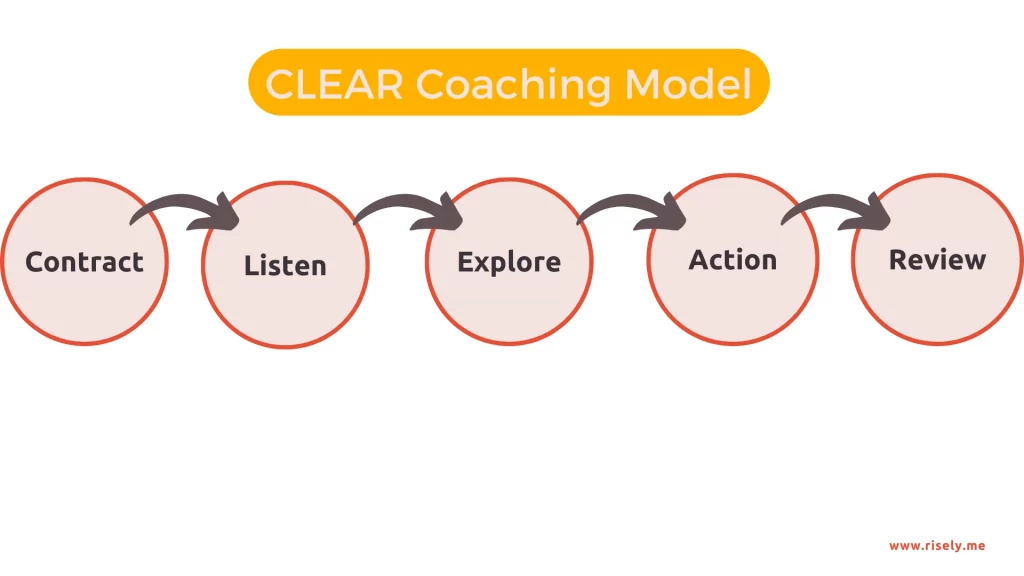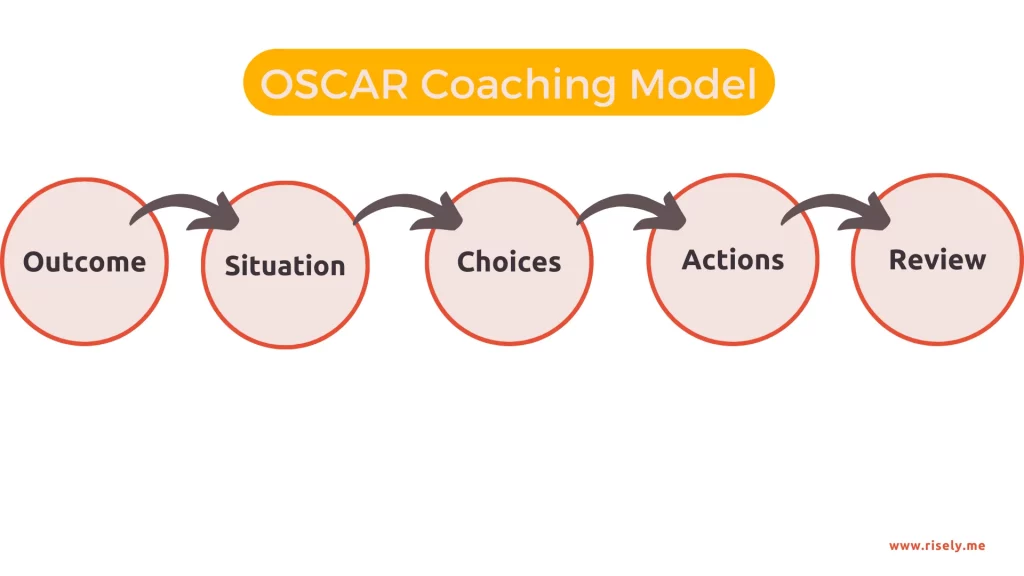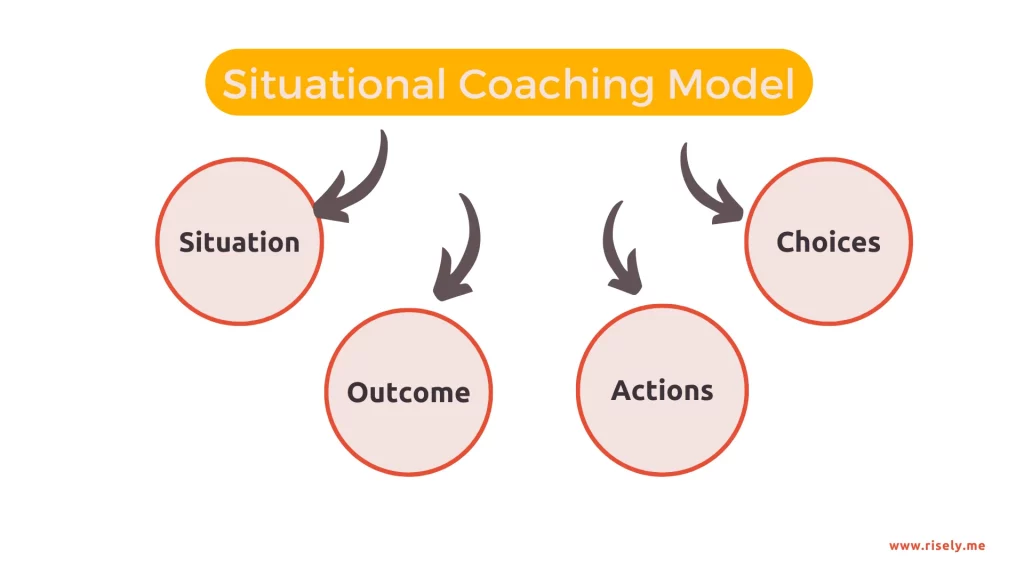4 Leadership Coaching Models You Need to Know
Have you started your journey as a coach only to be confused by how to get it right? It’s bound to happen as there are so many ways to reach that one goal – building people’s capacities and enabling performance. A coaching framework is designed to help you do that at scale so that you have a roadmap with the milestones marked every time you start. However, not every leadership coaching model is a fit for every case. Your situation, including your style and your coachee’s needs, also matters in selecting the right leadership coaching framework. That sounds like a lot! But fret not because we will take you through four highly relevant leadership coaching models and set things up.What is a leadership coaching model?
A leadership coaching model is a guide or framework that provides a structured approach to coaching and developing leaders and managers in the workplace. It outlines a process from goal identification to progress measurement, helping you and your coachees navigate the coaching journey. These models enhance coaching skills, improve performance, and drive behavior change. Leadership coaching models are widely used in executive coaching, and you can apply them to individual, team, or group coaching.What can a leadership coaching model define for you?
The primary features of a leadership coaching model include:- A structured coaching process providing a step-by-step approach to coaching, from goal setting to action planning and review. It ensures that coaching sessions are focused, organized, and impactful.
- Effective coaching techniques, such as active listening, powerful questioning, and providing constructive feedback, are essential for successful coaching. These techniques promote self-reflection, stimulate critical thinking, and help you gain insights and new perspectives.
- Coaching styles, on the other hand, refer to your approach to coaching and developing individuals. Different coaching styles, such as democratic, autocratic, holistic, and vision, are suited to different situations and individuals. They determine the level of involvement, decision-making authority, and support the coach provides. A coaching style influences the dynamics of the coaching relationship and the outcomes achieved.
Exploring 4 Essential Leadership Coaching Models
Now let’s explore four essential leadership coaching models that have proven to be highly effective in coaching and developing leaders and managers in the workplace. While the core coaching skills are pretty similar, these models offer unique approaches to coaching, goal setting, and problem-solving, and you can apply them to various coaching situations.The GROW Model – Goal, Reality, Options, Will

- Goal: You help the coachee define their specific and measurable goals. This step involves setting SMART goals that are specific, measurable, attainable, relevant, and time-bound. Your role here is to assist the coachee in setting clear objectives and desired outcomes, not to define them for them.
- Reality: Next up, sit down with your coachee to assess the current reality and explore the coachee’s strengths, weaknesses, challenges, and resources. This step involves reflecting on the present situation and identifying any barriers or constraints that may hinder goal attainment.
- Options: The coach and coachee brainstorm different options and strategies to bridge the gap between the current reality and the desired outcome. You can explore various possibilities, alternatives, and potential actions that can lead to professional development of employees.
- Will: At this stage, you help the coachee develop a solid commitment to taking action and implementing their chosen options. The coachee formulates a plan of action, specifies specific steps, assigns responsibilities, and sets deadlines. The coach provides support, encouragement, and accountability throughout the implementation process.
The CLEAR Model – Contract, Listen, Explore, Action, Review

- Contract: You establish an agreement outlining the coaching relationship’s purpose, process, and expectations. This step ensures clarity and alignment.
- Listen: You actively listen to the coachee’s concerns, challenges, and aspirations. The emphasis is on coaches using open-ended questions to encourage the coachee to reflect and share their thoughts and feelings.
- Explore: Next up, you guide the coachee in exploring different perspectives, possibilities, and options. This step involves helping the coachee gain insights, challenge assumptions, and identify potential actions or solutions.
- Action: The coach and coachee collaborate in developing a concrete action plan. The plan includes specific steps, timelines, and resources to achieve the desired outcomes. The coach supports the coachee in taking responsibility and following the action plan.
- Review: The coach and coachee regularly review progress, discuss outcomes, and evaluate the effectiveness of the coaching process. This step provides an opportunity for feedback, reflection, and adjustment of the action plan if necessary.
The OSCAR Model – Outcome, Situation, Choices, Actions, Review

- Outcome: You first help the coachee define the desired outcome or goal. The coachee clarifies what they want to achieve and the intended results.
- Situation: Then, you explore the coachee’s current situation, challenges, and factors contributing to the current state together. This step involves reflecting on the present reality and identifying any barriers or constraints.
- Choices: The coach facilitates a brainstorming session to generate a range of choices and possibilities for achieving the desired outcome. The coachee considers different options and evaluates their feasibility and potential impact.
- Actions: The coach assists the coachee in developing a plan of action based on the chosen options. This step involves specifying specific action steps, setting deadlines, and assigning responsibilities.
- Review: The coach and coachee regularly review progress, discuss outcomes, and evaluate the effectiveness of the actions taken. This step enables the coachee to learn from their experiences, make adjustments if necessary, and celebrate achievements.
The Situational Leadership Model – Directing, Coaching, Supporting, Delegating

How can you pick the right leadership coaching model for your team?
As we initially noted, leadership coaching needs to adapt a lot to the context. Not all teams and coaches are made alike; hence, you need to pick the suitable leadership coaching model for your team carefully by keeping the following considerations in mind:- Individualized Development: Coaching focuses on individual needs and development goals, providing personalized guidance and support. Does the model encourage employees to own their learning journey and pursue ongoing growth?
- Skill Enhancement: Coaches help employees identify and develop the skills they need to excel in their roles and advance in their careers. Is the coaching model enabling skills development that matter to your team and team members?
- Leadership Development: Coaching plays a crucial role in developing and preparing leaders for future leadership roles. Is coaching preparing your team members to take up senior roles easily?
- Learning Culture: Coaching promotes a learning culture by encouraging open communication, collaboration, and sharing of knowledge and experiences. Is the leadership coaching model aligned with your company culture? Does it fit in easily with the schedules and preferences of the employees?
But, making the choice is not all: how to make leadership coaching models work?
Implementing leadership coaching models effectively requires careful planning and consideration of organizational needs and goals, outlined by the learning and development strategy. Here are a few key steps you should take while setting up a particular leadership coaching model for a team:- Assess Organizational Needs and Goals: Before implementing coaching models, assess the specific needs and goals of the organization. Identify areas where coaching can significantly impact and align coaching initiatives with organizational objectives.
- Tailor Models to Fit the Unique Culture of Your Organization: Adapt coaching models to fit the organization’s unique culture, values, and practices. Consider employees’ preferences and learning styles to ensure that coaching models resonate with them.
- Provide Training and Support: Train managers and coaches in the selected coaching models to ensure that they have the necessary skills and knowledge to coach and develop employees effectively. Provide ongoing support, feedback, and resources to enhance coaching effectiveness.
- Monitor and Evaluate: Regularly monitor and evaluate the impact of coaching initiatives on employee performance, engagement, and development. Collect feedback from coaches, coachees, and stakeholders to identify areas for improvement and make necessary adjustments.
Conclusion
In essence, understanding and implementing leadership coaching models are crucial for fostering a culture of continuous learning, enhancing employee engagement, and improving productivity in the workplace. By tailoring these models to fit your organization’s unique culture and goals, you can effectively train coaches and leaders to utilize them. Evaluating the effectiveness of coaching models regularly ensures their relevance and impact. Whether you choose to combine or customize coaching models, the key lies in aligning them with your organizational needs and objectives.Stop overthinking, start coaching!
Grab free resources from Risely to support your journey as a coach.
Other Related Blogs
Building a Coaching Culture with Jo Wright
Building a Coaching Culture with Jo Wright As AI takes over, we are all searching for the part that makes us truly human. For most managers and leaders, this search…
What is Immersive Learning? A New Era in Education
In this blog, you’ll learn what is immersive learning and how it is changing training, increasing engagement, and influencing the future of workforce development. … Read More
The Clear Coaching Models: A Revolutionary Approach to Coaching
This blog delves into the principles, significance, and applications of the CLEAR coaching models, exploring how they transform organizational development and enhance effectiveness. … Read More
Drive Meaningful Growth With The STAR Coaching Model
In this blog, we will explore the key elements of the STAR coaching model, outline effective implementation strategies, and discover best practices for enhancing coaching conversations. … Read More


